Archive
Monthly Archives: February 2017
Monthly Archives: February 2017
Schools are wonderfully diverse communities. In fact, when I remember my ‘other’ job in the real world, I see what a bubble I existed in for such a long time. Working away, like a hamster on a wheel, with people doing jobs like me, who were pretty much, just like me.
I don’t have a choice who rocks up at my classroom door. Even teaching in a school with a very small catchment area, I see the full and wide range of human experience reflected in the kids I teach.
This year, more than any before, I have wanted to champion both diversity and community in my ELA classroom. To give space for challenge and difference and to enjoy togetherness and unity. An idea for this – linked to writing – segued from a unit we were already studying. In Year 7 / Grade 7 we analyze a series of poems from different cultures, if you never heard or seen them I would recommend the following: Blessing by Imtiaz Dharker and Night of the Scorpion by Nissim Ekeziel.
I wanted my students to have the opportunity to give voice to their culture, just as these poets had. But in teasing out these thoughts, I quickly realised that even within one class of 30 students, we had no fixed culture. Yes we live in the same town, but some of us speak different languages at home, eat different food, love different music. I needed to find a way to hold both our difference and our unity up for the world to admire.
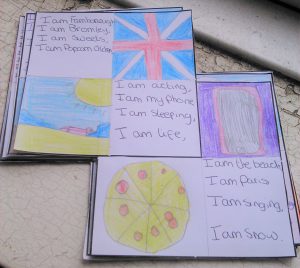
It could not have been any more simple in the end, the “I am” poem allowed my students to express both at once, in a muddle and a mix, just as it is.
Here’s what I asked students to do:
Once everyone had ideas in each box, we then discussed how to chose the ones that best represent ‘me’. I didn’t want to tell kids that ‘my iphone’ was wrong because that would have gone wholly against what I was aiming for – a celebration of them.
After the list generation phase, I would show the class my responses. Below is my original list (occasionally, now, I edit it and add sky diving or lion taming, just for fun).
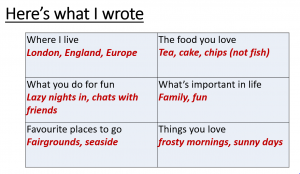
Then I model turning this list- in-a-box into a list poem. Firstly, we discuss nouns and articles and how in poetry missing them out can create meaning “I am tea and cake”, but occasionally they will be required because it just doesn’t sound right: “I am iPhone” becomes “my iPhone”. Again we discussed why “I am a sunny day” requires the article but “I am frosty mornings” doesn’t – looking at pluralisation and its impact.
Here’s my poem – which, yes, I show kids before they write their own one. I often ask students to consider what can be inferred from the various lines. My students tend to jump on “England and Europe” – I leave them to their speculations and then let them write their own.
I have no rules about the drafting and refining of these poems. I wanted a truthful expression. So after a lesson pottering about with words, we left the poems to ruminate for a while. Coming back to them the following day, allowed us one more opportunity to finesse and then we got creative.
I gave students this worksheet (click to download) and showed them the plan was to create a hanging squared poem to display.
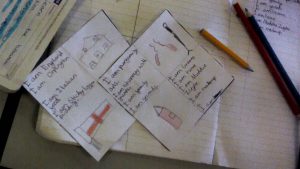
So they need to:
The result? A poem that shows the individual and yet celebrates the things that bring us together (cake, football, chicken) and the things that make us different (Russian, cheerleading champion, pro-golfer). I love it and I love them in all their samey-difference.
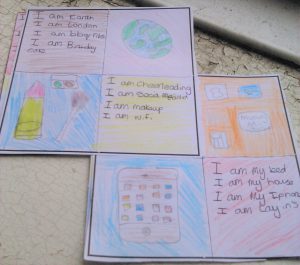
We laminate them and hang them around the room, sometimes stringing several together and leaving them to flutter in the breeze. Words and colour mixed together reminding us that diversity and community are beautiful.
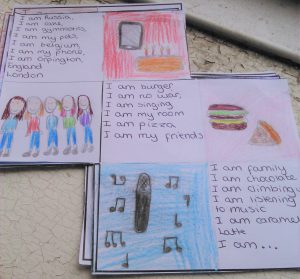 Sign up for my newsletter and receive regular updates, access to my free library and exclusive offers.
Sign up for my newsletter and receive regular updates, access to my free library and exclusive offers.

*I send emails with teaching tips, tricks, and free resources to my subscribers regularly. I value your privacy and you can learn more about how I handle your data in our private policy. You can unsubscribe at any time.
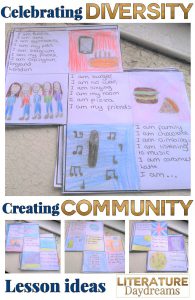
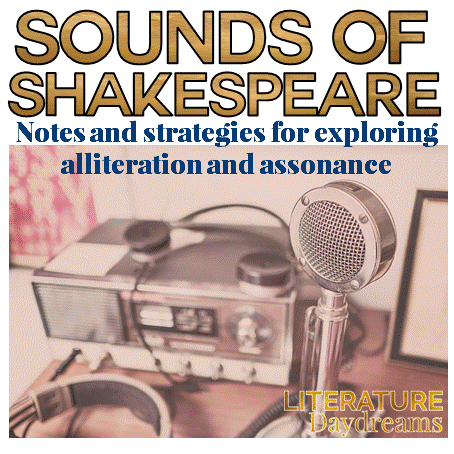
When students first begin studying Shakespeare, we spend most of our time focusing on understanding the language, talking about the characters and events, maybe even discussing the themes. What do we do when our students are capable of going further? What’s the next step in analysis and exploration? Well in answer to that question – I wanted to develop a bit on my last Shakey blogpost – and give you a little freebie to help.
My first stop, after we have moved on from comprehension and inference, into analysis is to focus on the Sounds of Shakespeare. His work after all was written to be performed and this element is essential to our understanding of it. It is the performance of his words that allows us to see and to hear the emotion, the performance is where interpretation becomes more fluid, less set. We’ve all seen this FB post:

Despite how easy it would be if the meaning Shakespeare’s words were fixed, they are not, and our most-able students are capable of discussing this.
Often – for me – this discussion of sound begins with the most simple sound patterns: alliteration and assonance. Specifically these patterns were used (like rhyme) as an aid to memory, actors used these sounds to help them memorize their lines. The rhythm created by the use of these patterns enables the words to flow without having to actively or consciously think about what words come next.
As a lesson opener, write the beginning of a nursery rhyme on the board. Now if you teach a diverse bunch of kids, like I do, you will need to choose carefully. (Remind me to tell you about the time I assume all my students had read Goldilocks…) My starter goes something like this:
1. Write the words ‘incey wincey spider’ on your whiteboard.

2. Ask the class to dictate the rest. Then ask them when was the last time they actually remember saying this nursery rhyme? I guarantee – even for those with younger siblings – these teens are not going around singing nursery rhymes all day.
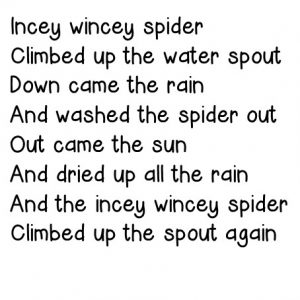
3. I then pose the question, why it is easy to remember, when we haven’t said it for years? I often say tell them at this point, that I lived at my old address for 8 years but today I can’t remember my postcode (zip code). Why can I remember this nursery rhyme?
The answer is often because of the rhyming words or repeated words, it is easy to remember. But then we look at little further.
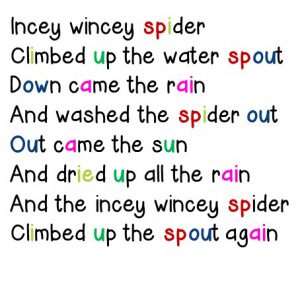
Yes there are a ton of repeated words – and this one reason why I use this particular rhyme, because sometimes one glaring technique (a powerful metaphor or a biblical allusion) can take away from everything else that is going on.
Look at the assonance and alliteration here – the long /i/ sound in ‘spider’ is echoed with ‘dried’ and ‘climbed’; the /ow/ sound in ‘spout’ is seen again in ‘out’ and ‘down’. These assonance echoes aid memory just as much as the rhyming of ‘rain’ and ‘again’. The alliterative elements are also easy to miss ‘spider’ and ‘spout’ – no rhyme, but for purposes of memory it works. I haven’t even highlighted the alliterative /d/ sounds throughout.
Once my students are comfortable with alliteration and assonance BUT before we dive into our Shakespeare play, I use extracts from famous Shakespearean speeches to force their focus onto sounds { see what I did there? force their focus }.
Why don’t I use the play we are currently studying? Well, I could I guess. But the problem is, my students know too much. They know all the characters and themes and once I ask them to start looking at the alliteration and assonance, they are going to get distracted by their knowledge! Wow! I never, ever, thought that would be a bad thing (and it isn’t really). I want them focus on the sounds alone. What do those sounds reveal? Without using prior knowledge, tell me about the sounds.
So download my freebie – right now – and that way you have it all ready to go. You can go through the info pages with your students as much as you like, then pick one of the coloring exercises for your students to complete, including is an extract from R&J and Sonnet 116.
Here students move from looking generally at repeated sound patterns to focusing on specific patterns and what they might mean. There are two explanation sheets included – the yellow one seen in the above picture takes students through the 8 types of alliteration and why they are used. Students can practise identifying alliterative patterns and then giving them meaning. The upside – anything using coloring pencils can’t be real work, right?
Ok. Coloring pencils away now. I am always super impressed with the ideas my students have following these exercises. They create real inferences, real analysis during these tasks. So to keep pushing them on, and building their confidence, we then move onto a simple annotation and exploration exercise.
Annotating a shorter passage (from Macbeth or Henry V) for alliteration, assonance and how these reveal emotion. These sheets give students an opportunity to develop their analysis and write up their ideas but in a low-pressure, low-stakes table. It again generates and aids great discussion.
Analyzing a whole speech – so if you are studying a Shakespeare play, then this would be the opportunity to introduce a speech or soliloquy from that play. For example – when teaching Macbeth, I might pre-teach these skills on the lead up to analyzing “Is this a dagger?” in Act 2, or with Antony and Cleopatra, I often use this as preparation for Enobarbus’ barge speech.
I’ve included part of Mark Antony’s funeral speech from Julius Caesar, as an example for you, partly because this is the first play we teach when our students arrive in Year 7 / Grade 6 at our school. I love the play and by this point in the play (three Acts in) my students are pretty confident with understanding the language and ideas.
So start with a tiny, plucky spider and finish with some fierce and confident analysis.
Teach on my friends.
Do sign up for my newsletter, you will gain access to my free resource library – I have put the answer keys for Sounds of Shakespeare on there, and much, much more!

I don’t know about you but there are some Shakespeare plays that I just love to teach. Macbeth, Antony and Cleopatra, and Hamlet all fall into that category. From start to finish my students and I are hooked on these stories. There also some plays that the kids love more than me – Romeo and Juliet. Don’t get me wrong, I cry every time, but there’s always something missing for me about R&J. I think it might be the lack of justice. It’s just all so damned unfair at the end.
And then there are some plays that I love for the sheer wonder and technical mastery displayed by this Colossus of the writing world. The Tempest is that play.
Before I tell you about what a humdinger of play The Tempest is, I want to share this golden nugget with you. Last summer I was honored to spend some time in the Shakespeare archive at Stratford Upon Avon. Amongst other wonders I came across this wonderful playbill for a production of The Tempest from 1857, isn’t is amazing?
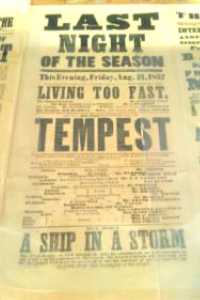
I said above that I love The Tempest for its technical mastery and although this is very true (in terms of high rhetoric The Tempest is genius) I also love it because it is a story of real, honest, dirty, and glorious human experience.
The Tempest takes many of Shakespeare’s conceptual obsessions and transports them and us to Island where we are trapped, and then set free. It is a story of family, of love, of power, of revenge, and of forgiveness.
And this is where our analysis of the play begins – with the big ideas:

If you take The Tempest out beyond its simple revenge narrative it is a tale of voyage and discovery, one in which some are subjugated and some are overlords. One where those who have power, will fight to keep it. It is a narrative of colonialism and how the wilderness and its savage inhabitants need civilizing.
Here The Tempest connects with the modern world. And often this is where my students gain their greatest enjoyment of the text, as we consider:
It’s funny, we never have to have the discussion about the ‘relevance of Shakespeare’ because with issues like this, there is no challenging that Shakespeare’s voice is timeless.
Our class discussions inevitability require some form of written response. When teens set the world to rights, their ideas need to be kept for prosperity. Our focus in here London at the moment is analytical essay writing (and I’ll get onto that in a moment) but there is a strong argument for allowing students the opportunity to explore their thinking in a more creative mode of writing first. We read like a writer, write like a reader, and then analyze like a reading writer.
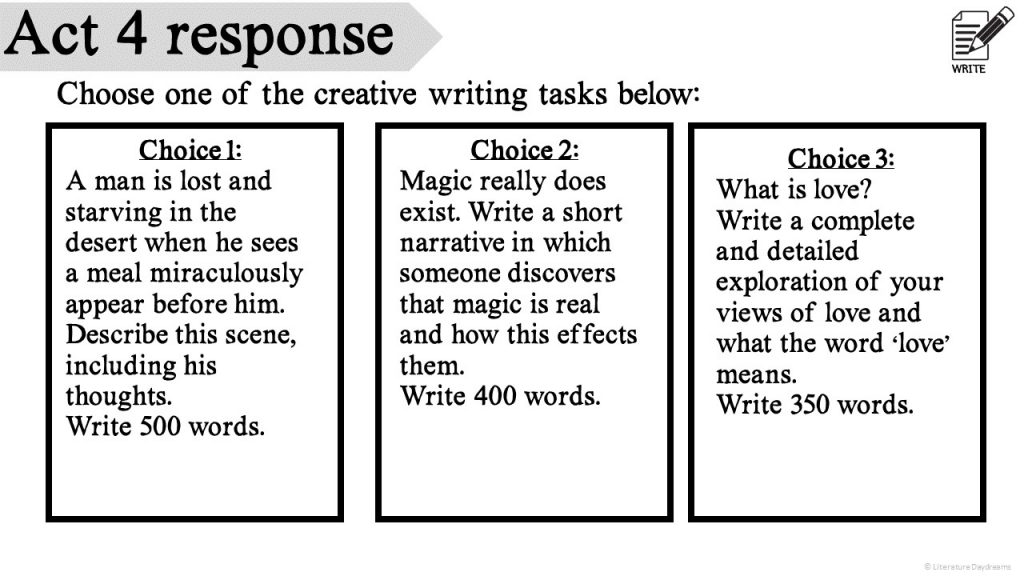
For me one of the utter joys of teaching Shakespeare is the confidence students gain in analyzing and interpreting his language. Here in London, our students take public examinations on Shakespeare at the age of 16 and at 18. In these exams they are required to write an essay where they dig deeply into Shakespeare’s language and form. As much as I would like to, it isn’t enough to spend all our time talking ideas. We have to roll up our sleeves and get stuck into the words and rhythms on the page.
Well, of course, I begin with the ideas in the play. We start out looking for evidence of the key themes and concepts in Shakespeare’s writing. Then we discuss their relevance at that moment, for that character.
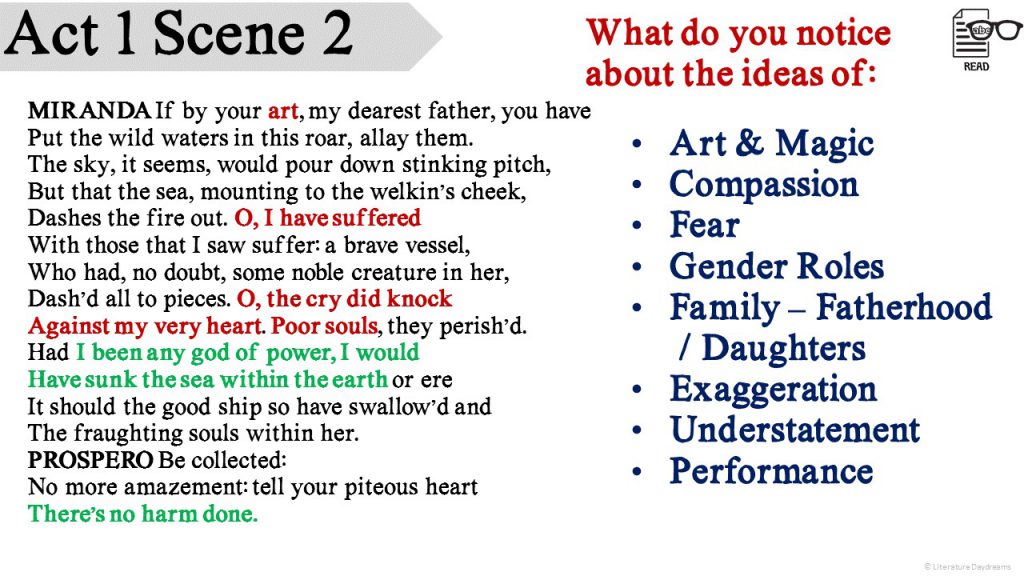
We might create a detailed close analysis of this speech looking at:
By starting looking for these universal ideas, students are distracted from the complexity of the language and begin to create analyses and inferences without even realising it. So how do I take their analysis to another level?
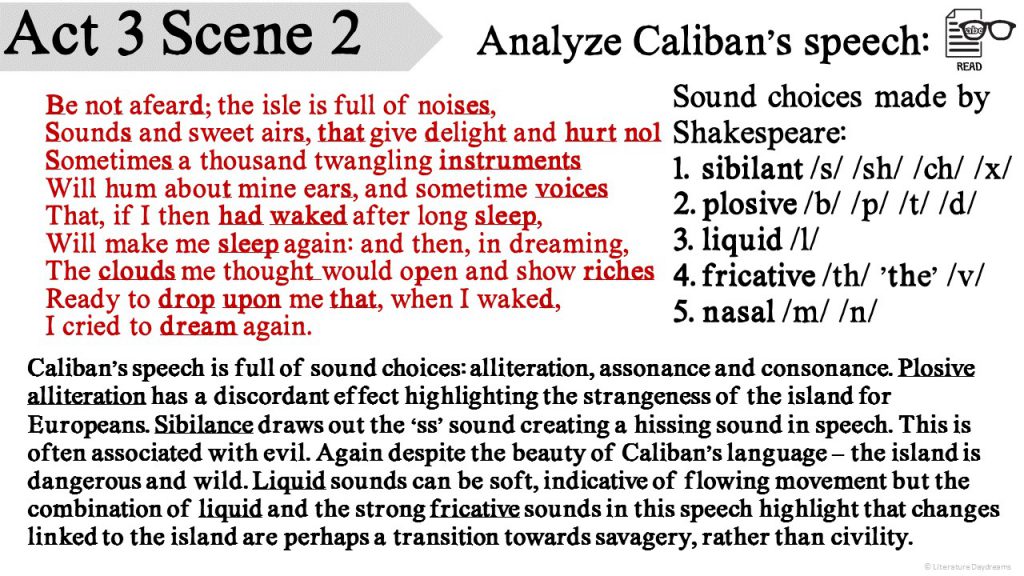
We use Shakespeare to teach a number of complex literary and rhetorical devices, he is well known for his use of rhetorical repetitions (anaphora, anadiplosis, epistrophe). Here students begin to unravel the effect that each of these has. We study alliterative repetitions, the effect of caesura and enjambment, antithesis, and any number of techniques. If you would like some help with teaching the Sounds of Shakespeare – then check my blog post here!
For us, it is essential that students can identify and explain the purpose of each of these. The example essay paragraph below shows the depth of understanding and engagement with ideas, character, language, and technique demonstrated by our students. It’s pretty awesome!
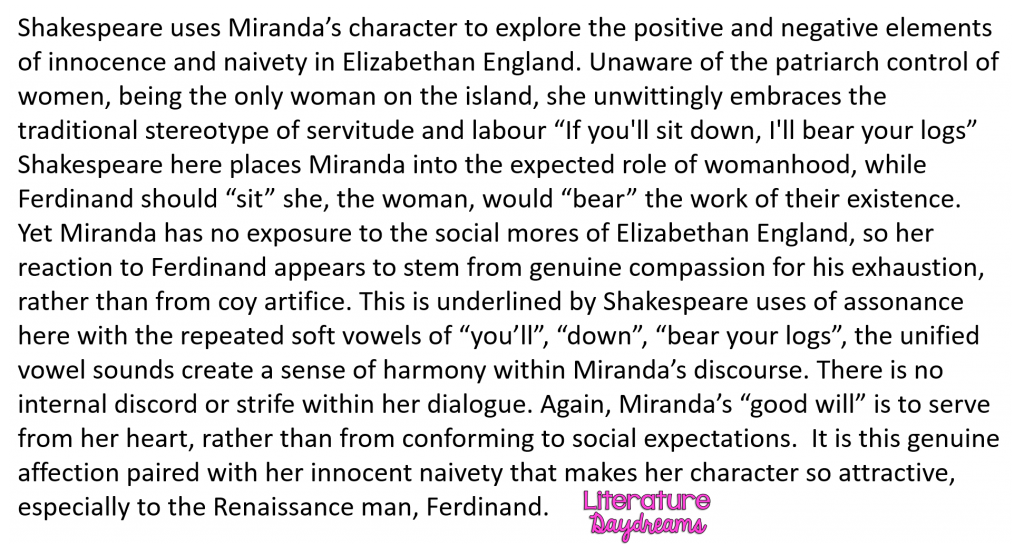
I know! I get it. That was a little bit too much. Do you ever have a phrase that you use with kids and for some reason they latch onto it and use it again, and again, and again? Well, “the social mores of Elizabethan England” became that phrase for me!
Here’s why, the final and almost the most important thing we do when studying Shakespeare is to place the text within its moment in history. And I don’t mean vaguely “people in Elizabethan times didn’t wash and that’s why Shakespeare makes jokes about people smelling”.
I mean with deep, detailed and in-depth knowledge of the era. The whos, the hows, the wheres and the whens.
Again how can any kid argue that history is boring and irrelevant when my starter question says:
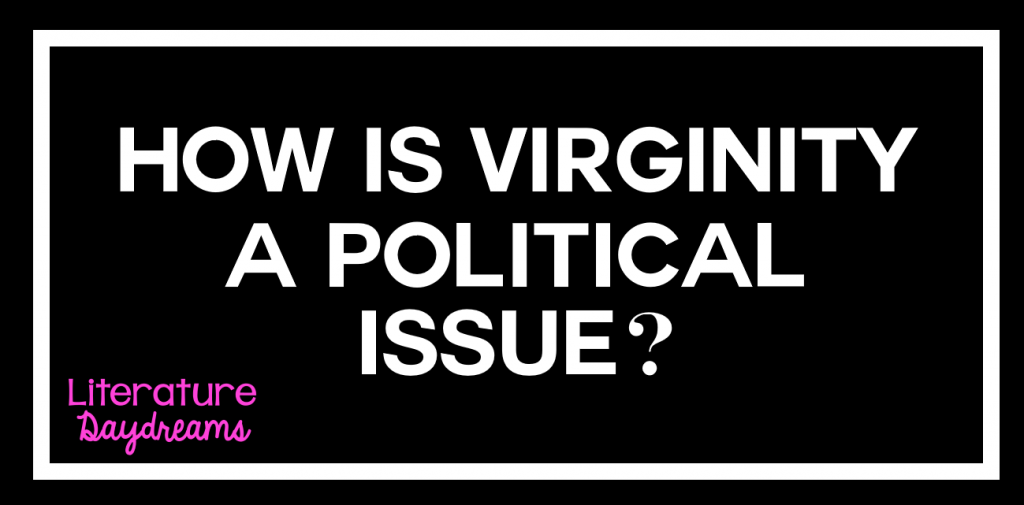
Welll, my friends, I’m glad you asked. Here’s one gem we cover, it quite a lot of awkward detail!
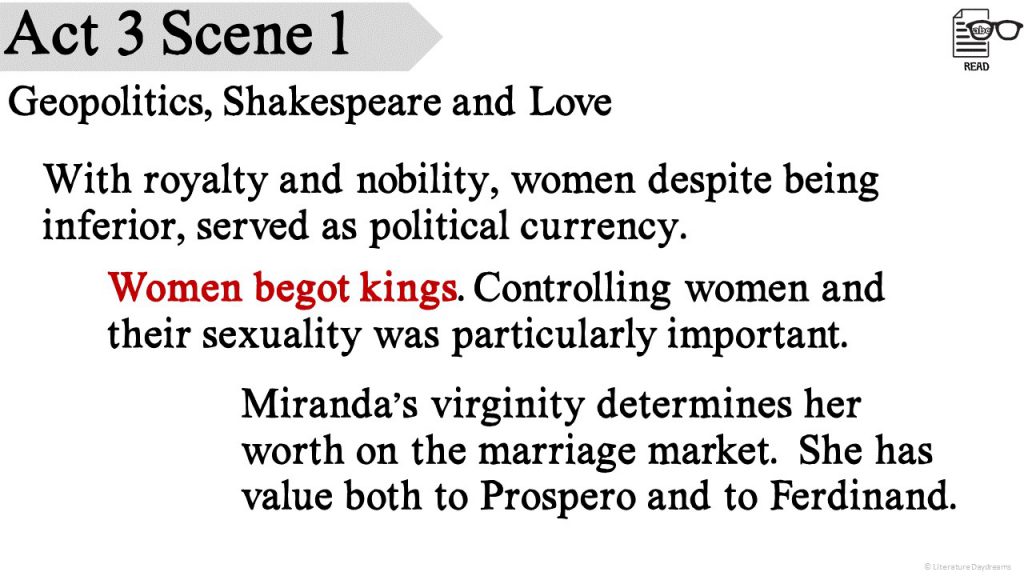
And it’s not just this – we study Elizabeth I and how she was both an awesome and unpredictable monarch. The unity and instability created by a unmarried woman on the throne catapults England into the gender dialogue of the day. James I unifies England and Scotland – or does he/ – returning the ‘small and brutish’ (Thomas Hobbes) nation to rule by absolute monarchy. Add to this the Gunpowder plot, the Age of Discovery, the Inquisitions and Jesuit Equivocators, the age of Shakespeare was rife with political intrigue and conspiracy.
Read, act, enjoy Shakespeare but don’t be afraid to study it. For us, going way beyond the ordinary is what makes us love him.
If you would love to teach The Tempest using the resources I have included above (plus over 200 pages of other goodies) then you can find them all at my TpT store here. You can also see all my Shakespeare resources here. Annnd if you would like – sign up to my newsletter to catch more of my Shakey blogposts!